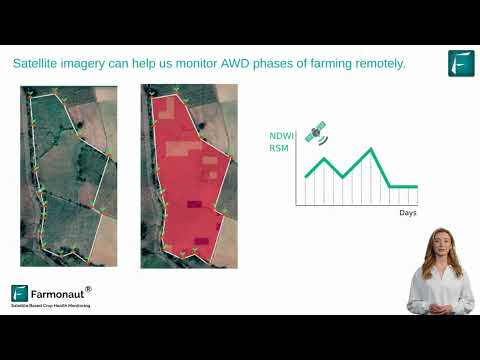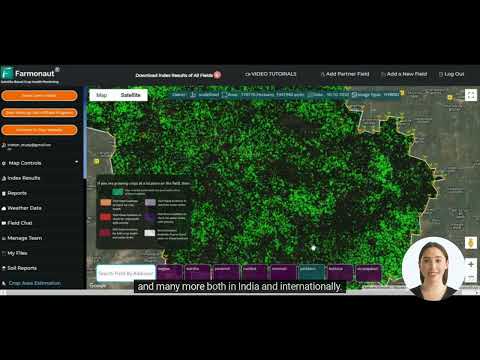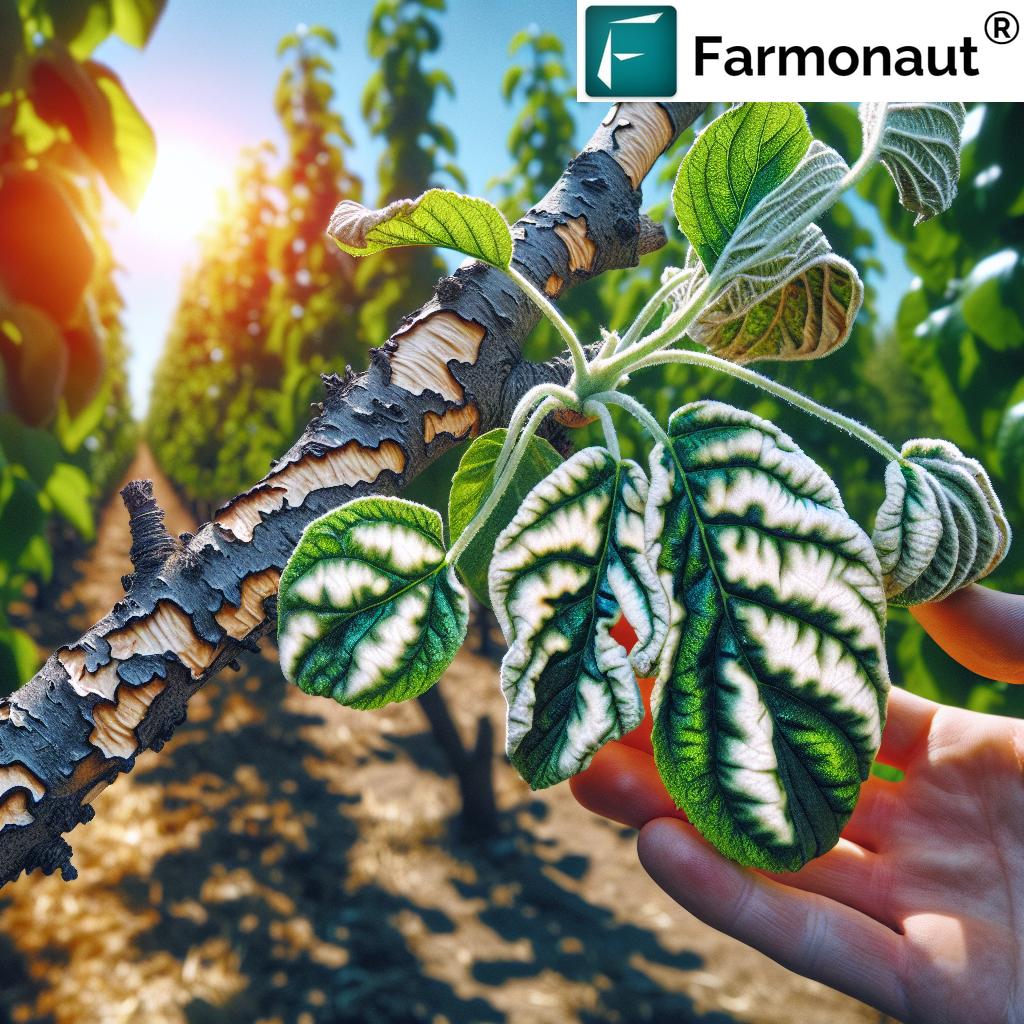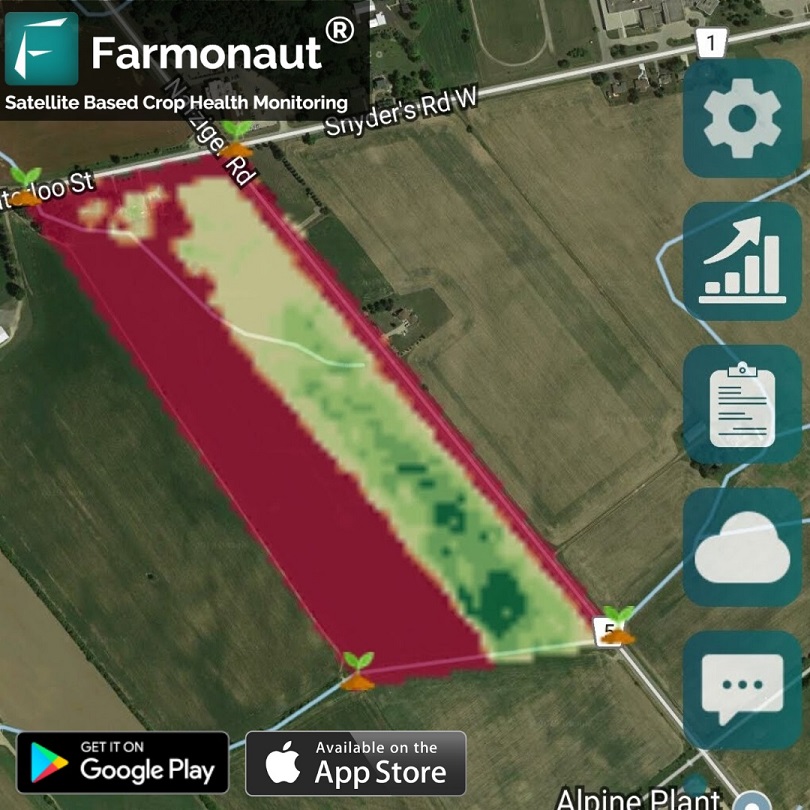Canola Secrets 2024: Boost Yields & Profits Fast!
“Canola crop rotation can increase wheat yields by up to 20% due to improved soil health and pest control.”
Introduction: Canola’s Global Importance
Canola—a remarkable member of the Brassicaceae family—stands out as one of the most versatile and economically significant oilseed crops cultivated worldwide. As we look toward 2024 and beyond, understanding the secrets to boosting canola yields and profits quickly is more vital than ever for farmers, agriculture professionals, and agribusiness leaders. Our global agriculture system depends significantly on canola’s high oil yield, health benefits, and flexible applications—from cooking oils and high-protein animal feed to biofuels and industrial uses.
In this comprehensive guide, we’ll reveal the best canola cultivation practices, explore the profound canola oil health benefits, and dive deep into crop rotation strategies that support sustainable farming and deliver high yields. Through a lens of environmental stewardship and market awareness, we’ll discuss tools, technologies, and trending strategies—such as integrated pest management in canola, advanced fertilization, and global canola production dynamics—that position us for success in 2024.
So, whether you’re an aspiring canola grower, an environmentalist, or a seasoned industry stakeholder following canola market trends 2024, this guide will empower you to optimize yields, maximize profits, and contribute to a more sustainable world.
Optimal Canola Cultivation Practices for High Yields
Optimal canola cultivation practices determine not just yield, but the profitability and sustainability of our entire farm operation. Let’s unravel the key pillars of successful canola farming in evolving global agriculture conditions.
1. Site & Soil Selection: Foundation of High Yields
- Soil Type: Canola favors well-drained, silt loam soils with moderate water retention. Avoiding waterlogged or sandy soils is essential for optimal plant health and root development.
- pH & Fertility: Target a slightly acidic to neutral soil pH (6.0–7.5), supported by regular soil testing to guide fertilization strategies.
- Seedbed Preparation: Thorough seedbed preparation is crucial—ensuring fine soil structure that enables uniform seed placement and quick emergence.
By focusing on the right soils and conditions, we set our crop up for vigorous growth and high potential yields.
2. Seed Selection & Variety: Tailored to Challenges
- Varieties: Choose disease-resistant, high-yielding canola varieties—especially those bred for resistance to major pests and diseases like blackleg, sclerotinia, and drought stress. This is critical in areas like Canada and China, the world’s leading producers.
- Seed Quality: Invest in seeds with high germination rates and uniform sizes. High seed vigor ensures rapid stand establishment for improved weed control.
Selecting regionally adapted hybrids—especially those tolerant to local weather challenges—significantly improves both yield and resilience.
3. Planting Dates & Population Density
- Plant Early, But Not Too Early: Aim for soil temperatures of 8–10°C at seeding depth.
- Optimal Density: Target plant populations of 75–150 plants/m2. Higher densities can suppress weeds but may increase disease risk under humid conditions.
Uniform emergence and timely planting set the stage for rapid canopy closure and better pest and weed management.
Canola Crop Rotation Strategies & Soil Health
A major canola secret for sustained high production is smart crop rotation. Here’s why canola crop rotation strategies are so important:
- Disease Suppression: Rotating with grains, corn, sorghum and other non-Brassicaceae crops breaks cycles of soil-borne fungal diseases, such as blackleg and clubroot, improving the outlook for subsequent plantings.
- Weed Management: Planting canola in rotation helps disrupt the lifecycle of major weeds (e.g., wild oats, green foxtail), reducing the risk of herbicide resistance.
- Chemical Release: Canola and some cover crops release allelopathic chemicals that suppress grass weeds and help manage nematodes and soil pathogens, further boosting soil health.
- Improved Soil Health: A rotation schedule with canola for every 3–5 years maintains nutritional balance and reduces the soil’s pathogen load, minimizing inputs and maximizing yields.
- Yield Boosts: Rotating canola with cereals can increase cereal yields by up to 20% the following season, due to better soil structure and organic matter.
By following these crop rotation approaches, we not only manage diseases and weeds but also contribute to long-term sustainability and profitability.
“Globally, canola oil accounts for over 15% of all vegetable oil production, supporting sustainable agriculture practices.”
Weed Management and Herbicide Strategies for Sustainable Canola Farming
Effective weed management underscores high-yielding canola cultivation. Unmanaged weeds can reduce yields by 30–40%, especially during early growth stages. Let’s review what works—and what to avoid:
- Timely Tillage: Seedbed preparation through shallow tillage prior to planting eliminates early-season weed flushes.
- Pre-Plant Herbicides: Use pre-emergence and pre-plant incorporated herbicides to control annual grasses and broadleaf weeds. Always check labels to prevent herbicide carryover—since canola is sensitive to certain residual chemicals from previous crops.
- Choosing Herbicide-Tolerant Varieties: Using genetically tolerant canola varieties allows more flexibility in in-season weed control, lowering the risk and cost of manual intervention.
- Integrated Weed Management: Avoid dependence on a single active ingredient—rotate herbicide modes of action and integrate mechanical, cultural, and biological controls for better long-term results.
Smart weed management not only reduces competition for light and nutrients but is also vital for maintaining soil health and limiting the risk of resistance.
Looking to integrate satellite and weather data for precision canola agriculture? Try the Farmonaut Satellite API or dive into technical details using the Farmonaut API Developer Documentation for comprehensive crop monitoring and farm management.
Canola Fertilization Strategies & Nutrient Management
High-yielding canola requires strategic fertilization and balanced nutrition to unlock its full potential. Here are core strategies for maximizing plant uptake and supporting rapid growth:
Key Nutrients for Canola
- Nitrogen (N):
Canola’s nitrogen uptake is heavy—almost 50% is absorbed before the bolting stage.- Split application (25–33% in the fall, remainder in spring) ensures nitrogen is available during periods of peak demand and reduces losses due to leaching or denitrification.
- Phosphorus (P): Crucial for root development, especially in cold soils. Deficiency limits yield—apply according to soil test.
- Potassium (K): Ensures healthy stems and improves drought/frost resistance; apply based on regional test levels.
- Sulfur (S): Deficiency manifests with pale flowers and stunted growth. Sulfur is essential for seed and oil development.
- Boron: While a micronutrient, boron supports pollen viability and healthy seed set—especially important for optimal production under stress.
Fertilization Application Best Practices
- Maintain proper intervals between fertilizer application and rainfall/irrigation to reduce volatilization and runoff.
- Conduct annual soil tests to adjust rates, and employ site-specific variable rate technology wherever possible.
- Use band placement (near but not with seed) for P and K to enhance early-season energy.
Incorporating these fertilization strategies not only ensures robust plant growth but improves yield optimization—particularly important for farmers in Canada, China, and high-output regions.
Integrated Pest Management in Canola: Strategies for Crop Health
Protecting canola from pests and diseases is a cornerstone of sustainable canola farming. With tightening pesticide regulations and resistance issues, we need robust, integrated approaches for long-term crop health.
Major Pests and Threats
- Flea Beetles: These notorious pests target seedlings, diminishing stands and early vigor.
- Lygus Bugs and Root Maggots: Sap plant nutrients and damage roots, impacting yield.
- Diseases: Blackleg, Sclerotinia Stem Rot, and Clubroot are key challenges, especially in humid climates or tight rotations.
Integrated Pest Management Steps
- Monitoring: Routinely scout fields with traps and visual checks to identify threshold levels for intervention.
- Crop Rotation: As discussed, rotating canola breaks pest and disease cycles, and reduces pressure on chemical controls.
- Resistant Varieties: Select hybrids bred for disease and pest resistance, particularly in high-pressure areas like the Canadian Prairies or North China Plain.
- Biological Controls: Where practical, use beneficial insects or bio-pesticides that reduce pest populations sustainably.
- Chemical Controls: Apply targeted pesticides only when pest levels breach economic thresholds—this prevents resistance and protects beneficial organisms.
Applying integrated pest management in canola reduces chemical reliance, improves environmental outcomes, and supports lasting yield optimization.
Canola Protein Applications and Canola Oil Health Benefits
A major driver behind canola’s global importance is the diversity of its end uses—especially its nutritional, economic, and environmental roles in food security, animal feed, and industrial applications.
Canola Oil: Health Benefits & Uses
- Low in Saturated Fat: Canola oil is one of the lowest in saturated fat content (less than 7%) among all major vegetable oils.
- High in Healthy Fats: Rich in monounsaturated fatty acids (MUFA) and alpha-linolenic acid (ALA), an essential omega-3 fatty acid.
- Cholesterol Management: Documented benefits in improving cardiovascular health, reducing LDL cholesterol, and supporting healthy metabolism.
- High-Heat Cooking: Neutral taste and high smoke point make canola oil ideal for frying, baking, and commercial food industry applications.
Canola Meal & Protein Applications
- High-Protein Animal Feed: The residual meal after oil extraction contains up to 38–40% protein—crucial for dairy, poultry, and aquaculture feed formulations.
- Plant-Based Alternatives: Canola protein applications are expanding into vegan foods, dairy substitutes, and specialty health foods, reflecting global trends.
- Biodiesel & Non-Food Uses: Used in renewable fuel production, lubricants, cosmetics, and beyond; showcasing canola’s sustainable versatility and high market demand.
These advances not only strengthen the economic importance of canola within the food industry but also its resilience against market fluctuations and emerging consumer trends.
Global Canola Production and Canola Market Trends 2024
Tracking canola market trends 2024 and global production ensures we stay competitive, adapt to shifting demand, and seize export opportunities.
Worldwide Production & Leading Regions
- 2021 Global Rapeseed Production: Total world production of rapeseed (the parent crop for canola) reached 26 million tonnes, with Canada, Germany, and China as largest producers. Canada led with 3.1 million tonnes exported in 2021—almost 74% of its own output.
- Asia-Pacific: Accounted for nearly 49% of worldwide acreage, led by India and China—driven by suitable climate and high domestic demand.
- North America: Canadian canola export volume in 2023 reached 18.6 million metric tonnes, highlighting its dominant global trade position.
Canola Market Dynamics & Trade Fluctuations
- China’s Import Adjustments: Recent events saw Chinese buyers slash Canadian canola imports over anti-dumping concerns (Reuters), causing volatility in canola markets and global futures pricing.
- Export Opportunities: Countries like Australia could benefit from shifting canola trade flows, especially if China relaxes biosecurity on Australian canola (Reuters).
- Protein and Industrial Growth: Surging demand for plant proteins and renewable biodiesel (in alignment with new EPA RFS credits) offer new markets for growers and processors alike.
These rapidly changing market forces underscore the need for resilient, agile canola production worldwide.
Sustainable Canola Farming: Environmental & Economic Impact
Modern sustainable canola farming is built on responsible stewardship and the twin goals of production efficiency and environmental sustainability.
Environmental Benefits of Canola in Agriculture & Forestry
- Resource Efficiency: Canola’s short season and modest water use result in lower resource consumption versus many competing crops.
- Carbon Sequestration: Canola’s dense foliage and deep rooting contribute to organic matter buildup and moderate carbon footprint reductions—especially when paired with no-till and cover crop systems.
- Biodiversity & Wildlife: Canola’s yellow flowers support pollinators and beneficial insects, improving the wider farm ecosystem.
See how Farmonaut’s Carbon Footprinting tools help growers monitor and manage emissions for more sustainable agriculture.
Canola’s Role in Crop Diversification
- Reduces pest and disease pressure across the rotation
- Spreads labour, machinery, and financial risk
- Improves soil structure and organic content
- Opens additional revenue streams from oil, meal, and renewable energy applications
Canola Cultivation Practices & Yield Comparison Table
| Cultivation Practice | Estimated Yield Increase (%) | Estimated Profit Increase (%) | Soil Health Benefit | Carbon Footprint Reduction |
|---|---|---|---|---|
| Crop Rotation | 10–20% | 15% | High | Yes |
| No-Till / Reduced Tillage | 8–12% | 12% | High | Yes |
| Integrated Pest Management | 7–15% | 11% | Medium | Yes |
| Precision Nutrient Application | 8–10% | 10% | Medium | Yes |
| Herbicide-Tolerant Varieties | 6–8% | 7% | Low | No |
At a glance, sustainable practices yield environmental and profit wins for canola growers worldwide!
Farmonaut: Advancing Sustainable Canola Production
Access to real-time satellite, AI, and blockchain insights has revolutionized the science and economics of canola production. Farmonaut offers affordable precision agriculture tools for farmers at all scales, empowering us to make data-driven management decisions.
How Farmonaut Supports Optimal Canola Cultivation
- Satellite Imagery & Crop Health Monitoring: Receive NDVI-based vegetation health updates, monitor soil moisture, and get timely alerts on crop stress or pest outbreaks—helping us apply resources more efficiently and optimize canola yields.
- Jeevn AI Advisory System: Get customized agronomic advisory—including weather forecasts and crop management tips—to react faster to challenges and support improved yield optimization.
- Blockchain-Based Traceability: Enhance transparency and trust in the canola food industry. Explore more about Farmonaut’s Traceability Solutions, which ensure authentic, transparent supply chains from farm to table.
- Fleet & Resource Management: For enterprises, Farmonaut provides cost-effective fleet management—optimizing logistics, cutting operational expenses, and ensuring timely deliveries of inputs and output.
- Large-Scale Farm Monitoring: Manage multiple blocks, monitor field variation, and streamline field staff insights with Farmonaut’s Agro Admin App designed for scalable, multi-farm operations.
- Crop Loans & Insurance: Get satellite-verified farm data for faster, fraud-resistant crop loans and insurance approvals.
We can leverage these user-friendly tools via Android, iOS or web—meaning precision is finally within reach for sustainable farming worldwide.
Recent Developments in Canola Trade and Markets
Staying aware of canola market trends 2024 is vital. For instance, Chinese buyers recently reduced their imports of Canadian canola amid fears of anti-dumping duties. This led to lower export volumes, affected global market prices, and created fresh trading opportunities for Australia and the EU.
Read more: Chinese buyers slash Canadian canola imports.
Simultaneously, Australia could stand to gain, provided Chinese biosecurity regulations allow new sourcing.
Fluctuations like these reinforce the need for adaptability, robust data, and maximize on-farm efficiency for all global players.
Frequently Asked Questions (FAQs) about Canola
What is canola, and how is it different from rapeseed?
Canola is a type of rapeseed bred to have low levels of erucic acid and glucosinolates, making it safe for human consumption. Both belong to the Brassicaceae family, but canola is optimized for oil and protein uses in food and animal feed.
Which countries are the largest producers of canola?
Canada, China, Germany, and India are leading canola producers worldwide, with Canada also commanding a significant share of global exports.
How does crop rotation with canola benefit the soil and farm profitability?
Canola crop rotation strategies suppress soil-borne diseases, disrupt weed cycles, improve organic matter, and enhance subsequent crop yields—directly increasing farm profits.
Is canola oil healthy?
Yes, canola oil is celebrated for its low saturated fat, high omega-3 content, and benefits in cholesterol management—making it one of the healthiest cooking oils available.
What tools are available for monitoring canola crops?
Precision agriculture platforms like Farmonaut provide real-time satellite-based crop health monitoring, AI-driven advisories, and blockchain-supported traceability—empowering us to boost productivity and sustainability.
How is canola contributing to renewable energy goals?
Canola oil is increasingly used in biofuel production, with recognition from agencies like the EPA for generating renewable fuel credits, aiding global sustainability efforts.
Conclusion: The Future of Canola in Sustainable Agriculture
As we’ve explored, canola is a pillar crop—central to sustainable agriculture, innovative food industry development, and the quest for renewable solutions. By applying the latest canola cultivation practices, optimizing inputs, using data-driven technology, and staying alert to market trends, we’re positioned to increase both yields and profits—fast.
Let’s embrace the opportunities of 2024. Together, with smarter management, integrated pest control, effective rotation strategies, and powerful precision tools like those offered by Farmonaut, we can grow more, earn more, and protect our environment for generations to come.
Ready to monitor your canola field from space? Get started today with the Farmonaut Crop, Plantation & Forest Advisory Platform for comprehensive field management wherever you are.






















